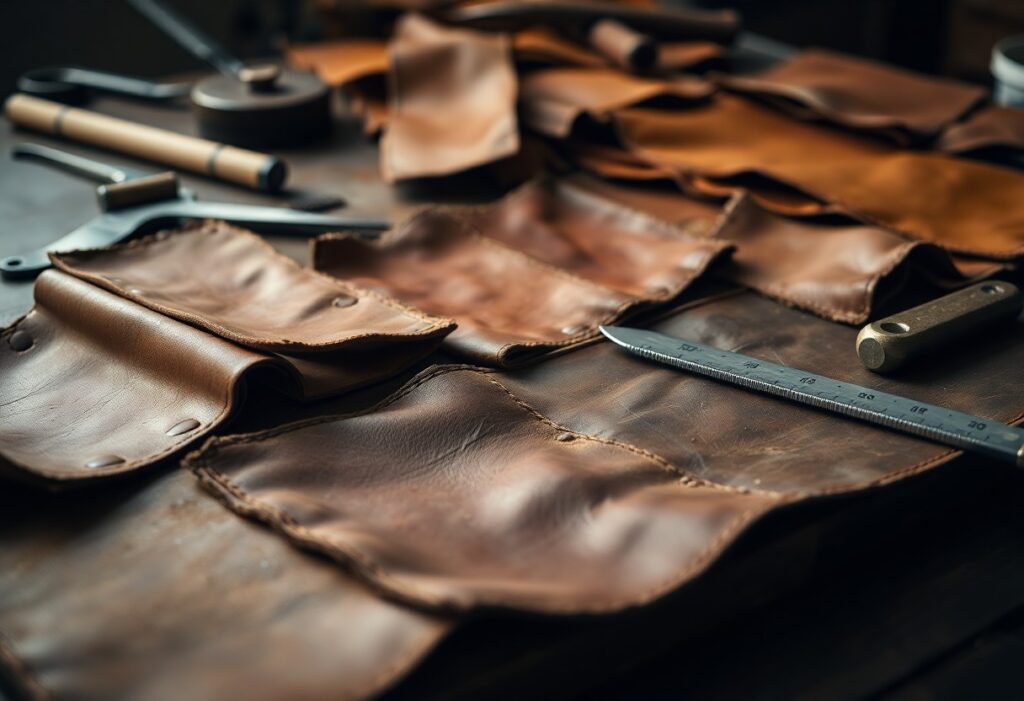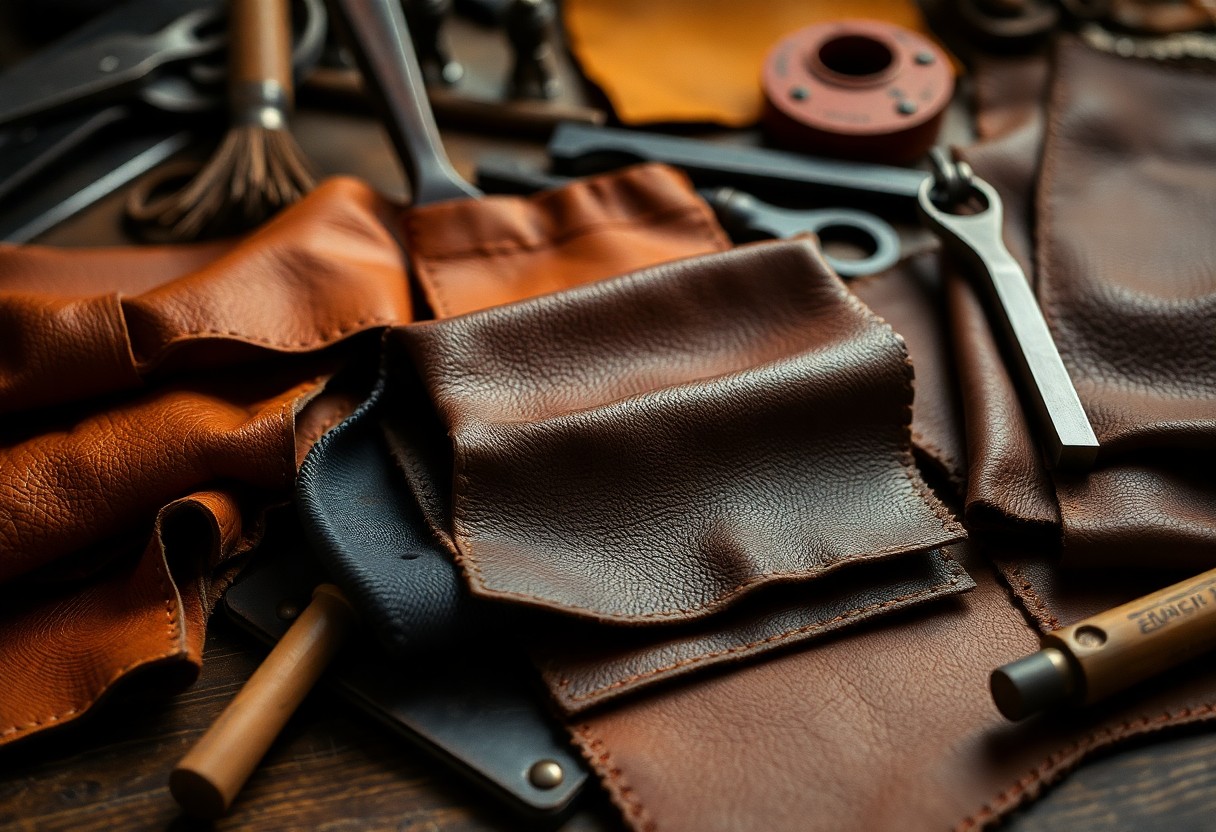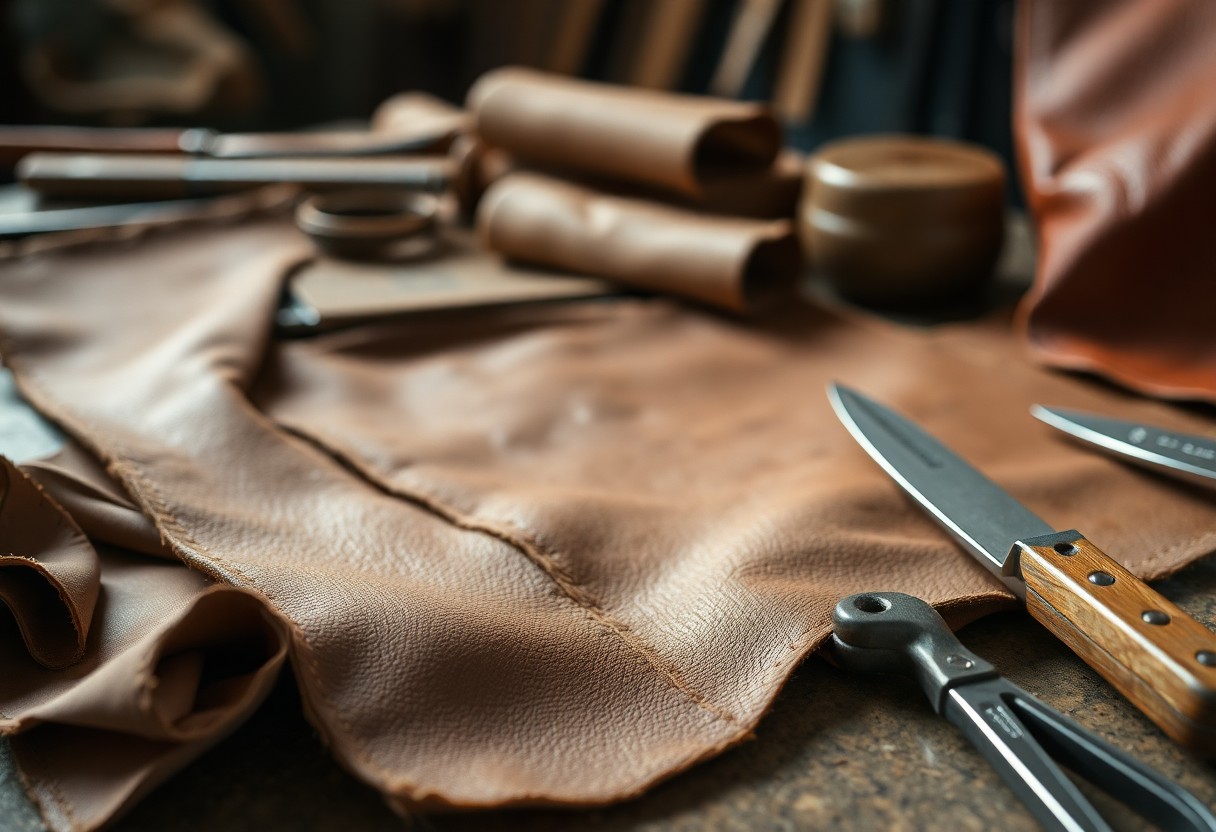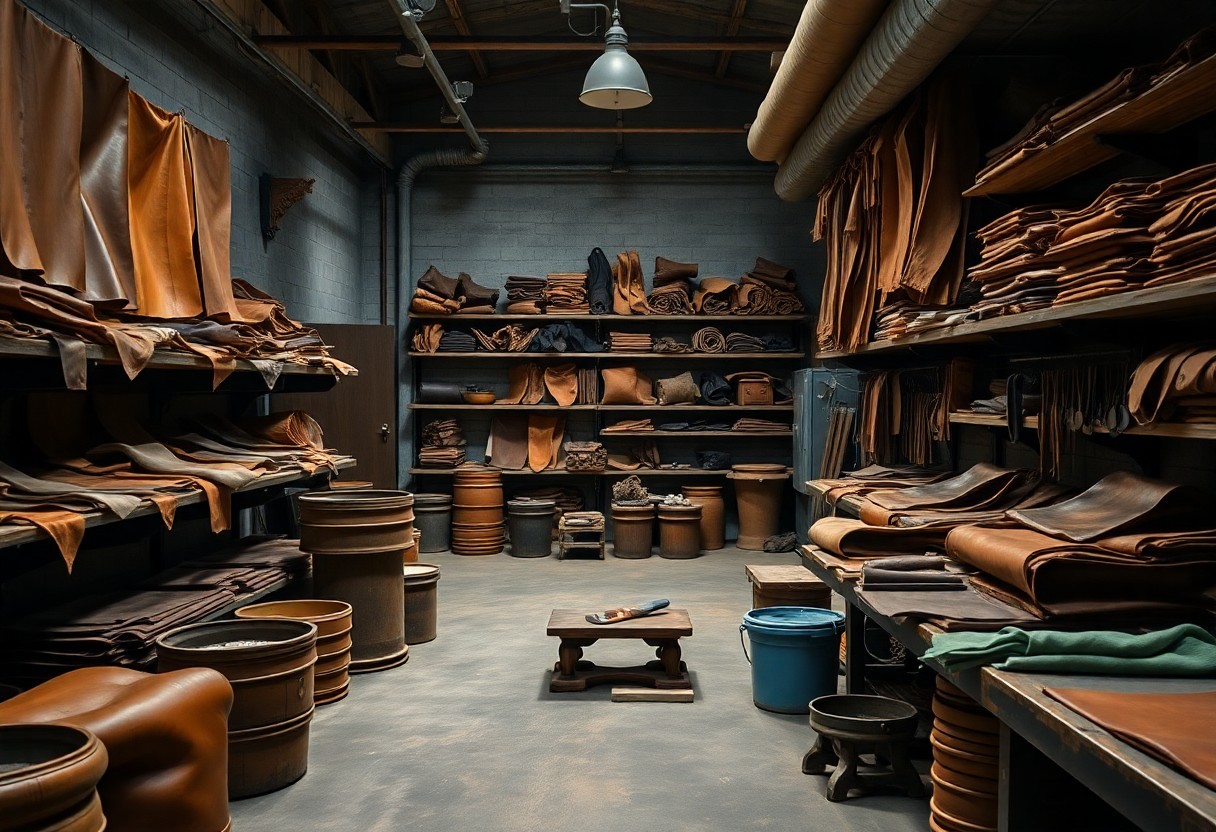
The journey of leather tanning has transformed significantly over the years, leading to a highly intricate process that plays a pivotal role in determining the quality of leather products. Different tanning methods produce distinct characteristics in leather, influencing essential aspects such as durability, water resistance, texture, and color retention. The tanning journey commences with raw hides and progresses through several critical stages, which may include chrome tanning, vegetable tanning, and chrome-free methods. Each technique imparts unique properties to the leather, affecting its usability and care requirements. By developing a comprehensive understanding of these tanning processes, you are better equipped to make informed decisions regarding leather quality, while also weighing the environmental implications, as some methods are considerably more eco-friendly than others.
Discover the Different Leather Tanning Techniques and Their Benefits
In the world of leather production, a myriad of tanning methods is utilized to convert raw hides into practical leather goods. The primary techniques include chrome tanning, vegetable tanning, and chrome-free tanning. This extensive guide aims to elucidate the intricacies of each method, empowering you to choose the one that best aligns with your leather requirements and values.
| Method | Characteristics |
| Chrome Tanning | Fast, water-resistant, accounts for 85% of global production |
| Vegetable Tanning | Natural, eco-friendly, represents 10% of production |
| Chrome-free Tanning | Environmentally safe, comprises 5% of production |
| Combination Tanning | Combines multiple methods for unique properties |
| Aldehyde Tanning | Specialized process tailored for specific applications |
Gain Insights into the Chrome Tanning Process and Its Advantages
The chrome tanning technique utilizes chromium (III) salts to craft leather that is not only soft and flexible but also highly sought after for various applications. This method results in leather that is remarkably water-resistant and readily absorbs dyes, making it a favored choice in the leather industry. The efficiency of chrome tanning is noteworthy, often completing the process within 24 to 48 hours, which is crucial for meeting mass production demands.
Explore the Traditional Craft of Vegetable Tanning
As one of the oldest and most time-honored methods, vegetable tanning employs natural tannins derived from tree barks and leaves. This method is revered for its capacity to produce leather that ages gracefully, developing a rich patina over time while being biodegradable. Different types of vegetable tanning, utilizing materials like oak bark, chestnut, and mimosa extracts, contribute to the unique attributes of the final product. This traditional method is a time-intensive process, taking approximately 4 to 6 weeks, resulting in leather that is typically firmer and more structured compared to chrome-tanned leather.

A Detailed Overview of the Leather Tanning Process from Start to Finish
The transformation of raw hides into high-quality finished leather involves a precise and systematic series of steps. Here’s an in-depth examination of each key step and how it contributes to achieving the desired quality of leather.
Pre-tanning Procedures Essential for Ensuring Quality
To guarantee the highest quality leather, raw hides undergo a series of meticulous preparation steps prior to tanning. This initial phase involves soaking the hides in clean water for 24 to 48 hours to effectively remove salt and dirt, followed by a liming process to eliminate hair and fats. It is imperative to maintain precise pH control during this stage to prevent any damage to the hides and ensure the best possible outcome.
Key Steps in the Primary Tanning Process Explained
The pretanning phase includes deliming and pickling to prepare the hides for the primary tanning agents. Chrome tanning, the most common method, utilizes chromium sulfate and can transform hides into leather within a mere 24 hours. Conversely, vegetable tanning employs natural tannins, extending the tanning process to around 20 to 60 days.
An additional critical factor in the tanning process is temperature control. Chrome tanning typically occurs at temperatures between 35 and 40°C, while vegetable tanning is conducted at cooler temperatures of 20 to 25°C. Continuous monitoring of pH levels is vital to prevent leather damage and to ensure optimal absorption of tanning agents throughout the process.
Advanced Leather Treatment Techniques for Improving Quality
Numerous techniques are available for enhancing the properties of your leather. From surface finishing to deep penetration treatments, each method serves a distinct purpose. With the right treatment approach, you can extend the lifespan of your leather by up to 50% and significantly enhance its resistance to water, heat, and wear.
Examining Various Surface Treatments for Leather
Surface treatments applied to leather can encompass waxing, buffing, and protective coatings. These techniques can enhance water resistance by as much as 70% and offer you the flexibility to choose between a glossy or matte finish based on your personal preference. Additionally, surface treatments are crucial for protecting leather from UV damage and everyday wear and tear, extending the life of your leather products.
Dyeing Techniques for Achieving Vibrant Colors and Enhanced Durability
Your leather can absorb various types of dyes at different depths, influencing both its appearance and longevity. Aniline dyeing, for instance, penetrates deeply into the leather, providing rich color saturation, while surface dyeing allows for more controlled color application. The dyeing method you choose will directly impact the final look and durability of the leather.
Moreover, the dyeing technique selected significantly affects the overall characteristics of the leather. Drum dyeing can achieve an impressive 95% color penetration, while spray dyeing offers improved precision in color control. It’s also important to note that natural dyes are more eco-friendly but may fade approximately 20% faster compared to synthetic dyes.

Identifying Key Quality Factors in Leather Processing
The quality of leather is influenced by a multitude of interconnected factors throughout the entire processing chain. Understanding these elements is crucial for achieving exceptional results in both leather selection and care. Variables such as the tanning method, hide quality, and processing parameters all play integral roles in determining the final attributes of the leather. By mastering these critical factors, you will be better prepared to assess leather quality based on your specific needs and preferences.
Selecting Raw Materials for Optimal Leather Quality
When selecting raw materials, it’s essential to focus on the condition of the hides and the animal source. The quality of your raw materials has a direct impact on the properties of the final leather product. The finest hides originate from healthy animals and are characterized by minimal surface defects. Look for thickness consistency and ensure there is no parasitic damage. It’s crucial to choose materials based on their intended end use, as different applications require specific hide characteristics for optimal performance.
The Significance of Processing Parameters in Maintaining Quality Control
There is a direct correlation between processing controls and the overall quality of leather produced. Maintaining precise control over pH levels, temperature, and chemical concentrations is paramount. The tanning duration generally spans from 24 to 48 hours, with temperature controls held between 35 and 40°C. Your diligent attention to these parameters ensures consistent leather quality throughout the entire process.
This level of meticulous oversight should extend to every stage of processing. You must monitor moisture content (ideally 45-55%), maintain appropriate drum speed during tanning, and ensure accurate chemical dosing. Additionally, managing the drying conditions is vital to prevent any damage to the leather. A thorough focus on these parameters culminates in the production of higher-quality finished leather.
Expert Recommendations for Achieving Superior Leather Treatment Results
Not all leather treatment processes yield the same level of quality; thus, it’s essential to concentrate on temperature control, chemical balance, and timing precision throughout the tanning process.
- Regularly monitor pH levels
- Maintain consistent temperature
- Adhere to exact chemical ratios
- Document each step meticulously
Being aware of the signs of proper tanning can empower you to achieve high-quality finished leather consistently.
Optimizing Processes for Maximum Efficiency
To achieve optimal results, controlling your tanning environment is crucial. Keep your workspace temperatures between 20 and 25°C and maintain humidity levels ranging from 45-55%. Ensure that your chemical solutions are fresh and accurately measured. Regular maintenance of equipment is essential for achieving consistent results and minimizing variations in quality.
Upholding Quality Standards in Leather Care Practices
The quality of leather is heavily reliant on your storage conditions and handling procedures. Store your leather in a dry, cool area away from direct sunlight to preserve its integrity and prolong its lifespan. Regularly check the moisture content and rotate your stock every 30 days to maintain optimal conditions.
Monitoring the entire process is critical for upholding quality standards. Your routine checks should encompass pH testing, physical inspections, and moisture content analysis. Documenting all findings and making adjustments to your procedures based on the results will allow you to maintain consistent quality control and detect potential issues before they negatively impact your final product.

Understanding the Advantages and Disadvantages of Different Tanning Techniques
To gain a comprehensive understanding of leather tanning, it is essential to evaluate the various methods based on their respective advantages and disadvantages. Below is a thorough comparison of the primary tanning techniques:
| Pros | Cons |
|---|---|
| Chrome tanning: Quick processing, cost-effective | Chrome tanning: Environmental concerns, potential disposal issues |
| Vegetable tanning: Eco-friendly, natural process | Vegetable tanning: Time-intensive, requires higher water usage |
| Chrome-free tanning: Environmentally safe, produces good quality leather | Chrome-free tanning: Complex process, often incurs higher costs |
| Combination tanning: Offers versatile properties | Combination tanning: Presents challenges in quality control |
Financial Considerations Regarding Leather Tanning Methods
Decisions regarding leather tanning methods can have a significant impact on your production costs. Chrome tanning boasts 85% cost efficiency compared to vegetable tanning, while chrome-free methods often increase expenses by 20-30%.
The Relationship Between Tanning Choices and Leather Quality
The quality of even the finest leather can be severely compromised by poor tanning decisions. Your chosen tanning method directly influences essential attributes such as durability, water resistance, and texture.
For example, leather treated through chrome tanning exhibits superior water resistance and flexibility, whereas leather tanned using vegetable methods tends to display better aging characteristics and develops a unique patina over time, enhancing its aesthetic appeal.
Key Insights into Leather Tanning and Treatment Practices
The information presented illustrates that various leather tanning and treatment techniques profoundly affect the quality and characteristics of your leather goods. The decision to opt for chrome, chrome-free, or vegetable tanning will significantly influence your leather’s durability, texture, and environmental considerations. Furthermore, the dyeing technique you select—whether aniline or crust—will impact your leather’s color depth and aging process. Finally, the type of finishing applied—be it full grain, corrected grain, or top-coated—sets the standard for appearance, breathability, and maintenance requirements. By gaining a thorough understanding of these processes, you empower yourself to make well-informed decisions regarding your leather purchases and care practices.
Your Leather Tanning Questions Answered: FAQs
Q: What are the key differences between chrome tanning and vegetable tanning?
A: Chrome tanning employs chromium salts, resulting in soft, water-resistant leather that can be processed quickly and economically. This method currently accounts for 85% of global leather production. Conversely, vegetable tanning utilizes natural tannins sourced from tree bark and leaves, requiring longer processing times while producing leather that gains character with age. Although vegetable-tanned leather is more environmentally friendly at the time of disposal, it is more susceptible to staining compared to chrome-tanned options.
Q: How does aniline dyeing affect leather quality and appearance?
A: Aniline dyeing involves submerging leather in dye baths that deeply penetrate the material. This technique yields uniform color throughout the leather, resulting in excellent color retention. Typically, contemporary aniline-dyed leather is dyed partially rather than completely, maintaining a lighter middle layer. This approach enhances the leather’s stability while ensuring good color depth on the surface.
Q: What differentiates full grain leather from corrected grain leather?
A: Full grain leather retains its natural surface without sanding or artificial overlays, showcasing natural pores and the strongest fiber structure, which can be restored when scuffed. In contrast, corrected grain leather undergoes sanding and is covered with a plastic layer. While corrected grain is easier to clean and maintain, it tends to lack breathability and may crack over time without a means of repair.
The Article Guide to leather tanning and treatment methods processes types and their impact on quality appeared first on My Shoes Finder
The Article Leather Tanning: Methods, Processes, and Quality Impact Guide Was Found On https://limitsofstrategy.com


It’s fascinating to see how our understanding of leather tanning has evolved alongside advancements in technology and growing environmental awareness. Personally, I’ve always been drawn to the uniqueness of vegetable-tanned leather, not just for its durability but also for the rich, organic feel it offers over time. It’s interesting to consider how the choice of tanning method affects not only the final product but also the broader environmental implications. For instance, the shift toward chrome-free tanning has been vital in minimizing chemical waste, which resonates with the growing trend towards sustainability in fashion.
I completely share your fascination with the evolution of leather tanning, especially the resurgence of interest in methods like vegetable tanning. There’s something very satisfying about knowing the leather will age beautifully and develop a unique patina over time, making each piece truly one-of-a-kind.
It’s fascinating to think about how historical practices shape modern leather tanning techniques. I recently came across a small artisan workshop that exclusively uses vegetable tanning methods, and it’s remarkable to see how much care and tradition go into each piece they create. They shared how their process not only enhances the leather’s durability but also aligns with sustainable practices, a consideration that resonates with many consumers today.
It’s fascinating to see how the journey of leather tanning reflects not just a transformation in craftsmanship, but also a broader cultural and environmental consciousness. As someone who appreciates high-quality leather goods, I always find myself questioning the origins of the products I choose. The nuances between chrome and vegetable tanning, for example, encourage us to consider not only the craftsmanship but also the ethical implications behind our purchases.
It’s really interesting that you bring up the origins of leather goods. I think there’s something inherently reflective about the way we engage with materials that carry such history. The distinction between chrome and vegetable tanning is a poignant illustration of how our choices can resonate through not just craftsmanship but also environmental and ethical dimensions.
You bring up such an important point about the origins of leather goods. It’s interesting how a deeper awareness of our choices can shape our appreciation for craftsmanship. The distinction between chrome and vegetable tanning really highlights the complexities behind leather production. With chrome tanning, you often get quicker results, but it raises questions about sustainability and environmental impact. In contrast, vegetable tanning, while more time-consuming, often results in a more durable and eco-friendly product.